Ten Concept Cars That Never Happened, But Should Have
April 15, 2015
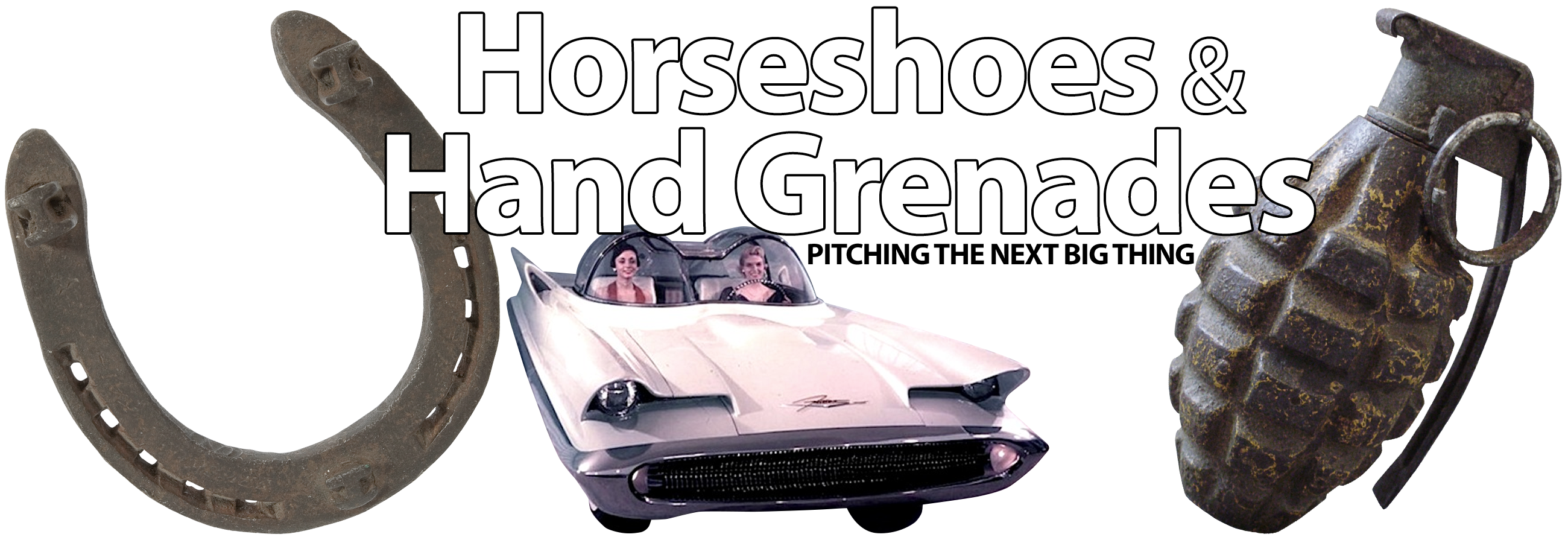
1951 Buick XP-300 concept
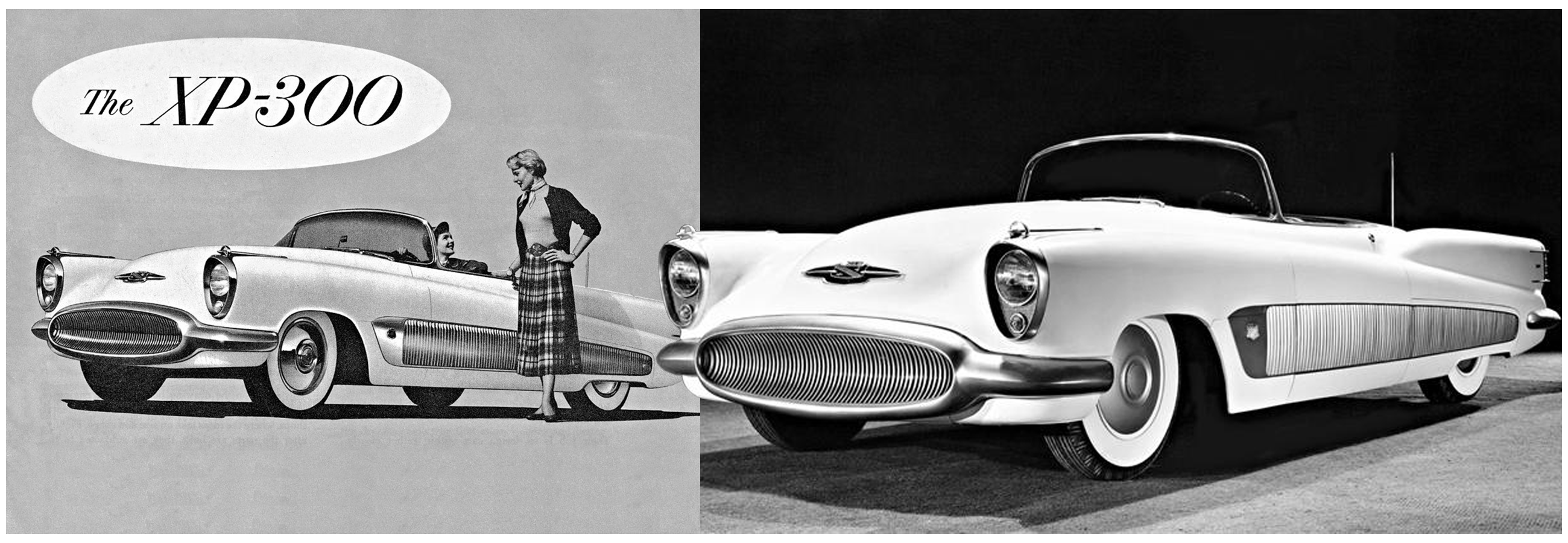 Back when the Buick nameplate still commanded top priority deep within GM Skunkworks walls, the arms race for serious concept development was wildly productive. Buick had been hitting home runs and the stakes were high. In what might be considered an internal competition, GM VP of Engineering, Charles Chayne penned the incredible XP-300. A competition against who you might ask? The other guy was Harley Earl and the other car was the LeSabre. The cars shared some development bits, including the supercharged V8, but you just have to love the XP-300's stance and the fact that Chayne allegedly clipped 140mph in this thing. Restorers everywhere are probably glad that gigantic trim piece didn't make its way into production, but those fins were years ahead of the game. The clean lines and shape would have given Thunderbirds something to worry about just a few years later. Take a good look at the styling cues and think about how familiar these would become for the next decade of GM cars.
Back when the Buick nameplate still commanded top priority deep within GM Skunkworks walls, the arms race for serious concept development was wildly productive. Buick had been hitting home runs and the stakes were high. In what might be considered an internal competition, GM VP of Engineering, Charles Chayne penned the incredible XP-300. A competition against who you might ask? The other guy was Harley Earl and the other car was the LeSabre. The cars shared some development bits, including the supercharged V8, but you just have to love the XP-300's stance and the fact that Chayne allegedly clipped 140mph in this thing. Restorers everywhere are probably glad that gigantic trim piece didn't make its way into production, but those fins were years ahead of the game. The clean lines and shape would have given Thunderbirds something to worry about just a few years later. Take a good look at the styling cues and think about how familiar these would become for the next decade of GM cars.
1953 Dodge Firearrow concept
 The Dodge Firearrow really makes you wonder. The car looked fantastic and seemed to ready to translate to a meaningful production car. Maybe the good looks were just too expensive to produce, ultimately for a car that didn�t hold the entire family. The concept was further proof that US manufacturers were feeling the heat of the popular European sports cars and were scrambling to get an American contender to market. Dodge penned four Firearrow concepts in 1953 and 1954, fishing for interest or any spark to get the program off the ground. Meanwhile Chevrolet slipped in the back door with their little fiberglass project in 1953 and ultimately won the battle for that market share.
The Dodge Firearrow really makes you wonder. The car looked fantastic and seemed to ready to translate to a meaningful production car. Maybe the good looks were just too expensive to produce, ultimately for a car that didn�t hold the entire family. The concept was further proof that US manufacturers were feeling the heat of the popular European sports cars and were scrambling to get an American contender to market. Dodge penned four Firearrow concepts in 1953 and 1954, fishing for interest or any spark to get the program off the ground. Meanwhile Chevrolet slipped in the back door with their little fiberglass project in 1953 and ultimately won the battle for that market share.

1954 Chevrolet Corvette Nomad concept
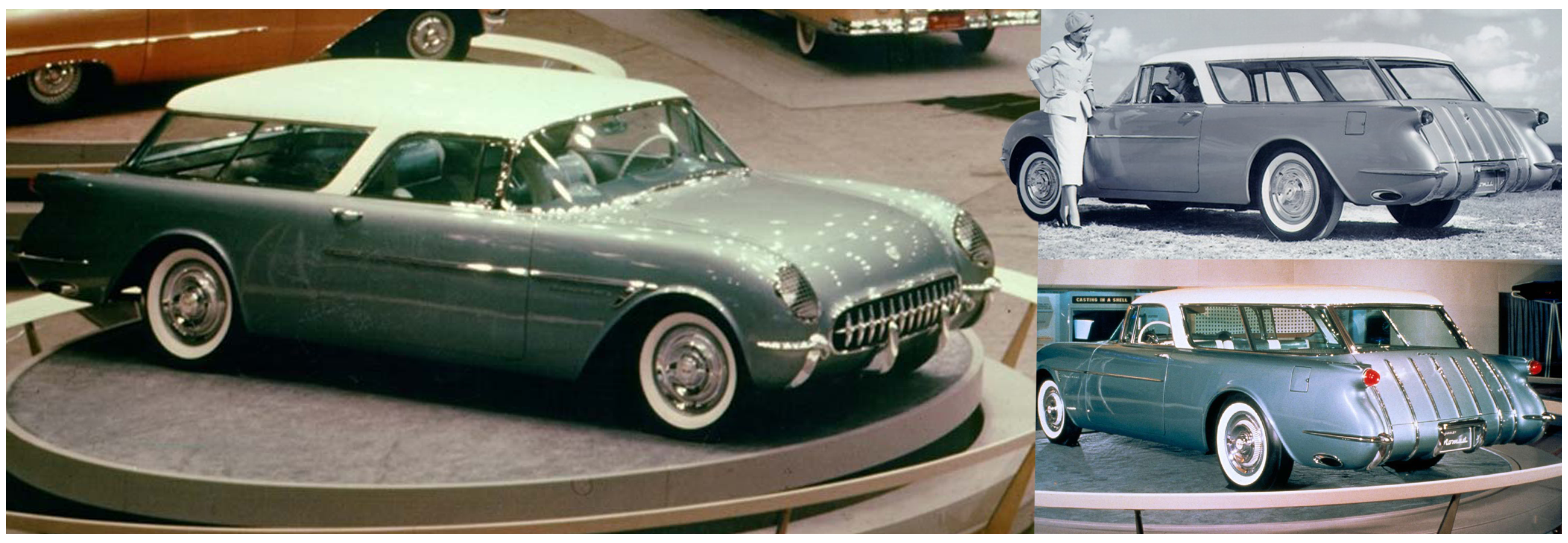 Five of these killer sport wagons were built for the 1954 GM Motorama in New York. Today, these little wagons might seem like a no-brainer. They look great and with a grumbly little motor, would have been excellent runabouts. At the time however, cars were looking for new identities as designs drifted out of the swooping fenders of the forties and into the soft bar-of-soap bodies of the fifties. A cheeky little sport wagon may or may not have been in the cards, but GM made run at it. The Nomad nameplate on a Corvette station wagon actually sounds terrible on paper, but the car looked great and probably should have happened. This might be the original American hot hatch, had we been prepared to downsize then.
Five of these killer sport wagons were built for the 1954 GM Motorama in New York. Today, these little wagons might seem like a no-brainer. They look great and with a grumbly little motor, would have been excellent runabouts. At the time however, cars were looking for new identities as designs drifted out of the swooping fenders of the forties and into the soft bar-of-soap bodies of the fifties. A cheeky little sport wagon may or may not have been in the cards, but GM made run at it. The Nomad nameplate on a Corvette station wagon actually sounds terrible on paper, but the car looked great and probably should have happened. This might be the original American hot hatch, had we been prepared to downsize then.
1954 Oldsmobile Cutlass concept
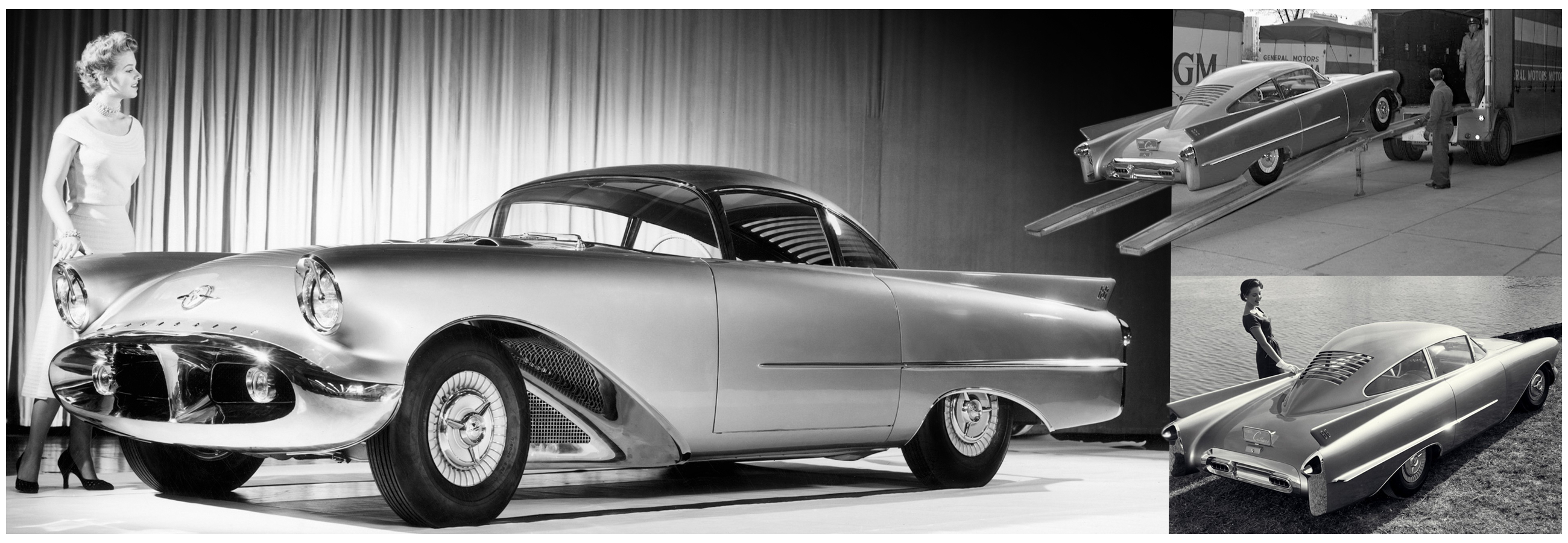 There was a time when Oldsmobile wasn�t just the car your grandparents might have had. In the mid-fifties Olds enjoyed a great share of the market. They'd been building cars as long as anyone else and had a great reputation to show for it. Taking its name from a fighter jet, The 1954 Oldsmobile Cutlass concept rolled onto the show circuit and took names. While it was definitely a �jet age� concept, the car wasn�t impossibly offered with plexiglass canopies and rocket boosters. The Cutlass was actually a pretty good design effort in terms of realistic production chances. The front inner fenders featured perforations to cool the engine compartment. It did feature a pretty silly back glass design with louvers that would have guaranteed mowing down your mail box within a week of purchase. The fins were a little wild, but not unreasonable and the car just looked like �the next big thing�. Here�s where it does start to get a little weird though, the entire body was reinforced plastic, for some reason the seats swiveled and of course the glass was tinted 'copper-toned'. You know, to help see better.
There was a time when Oldsmobile wasn�t just the car your grandparents might have had. In the mid-fifties Olds enjoyed a great share of the market. They'd been building cars as long as anyone else and had a great reputation to show for it. Taking its name from a fighter jet, The 1954 Oldsmobile Cutlass concept rolled onto the show circuit and took names. While it was definitely a �jet age� concept, the car wasn�t impossibly offered with plexiglass canopies and rocket boosters. The Cutlass was actually a pretty good design effort in terms of realistic production chances. The front inner fenders featured perforations to cool the engine compartment. It did feature a pretty silly back glass design with louvers that would have guaranteed mowing down your mail box within a week of purchase. The fins were a little wild, but not unreasonable and the car just looked like �the next big thing�. Here�s where it does start to get a little weird though, the entire body was reinforced plastic, for some reason the seats swiveled and of course the glass was tinted 'copper-toned'. You know, to help see better.
1961 Chrysler Turboflyte concept
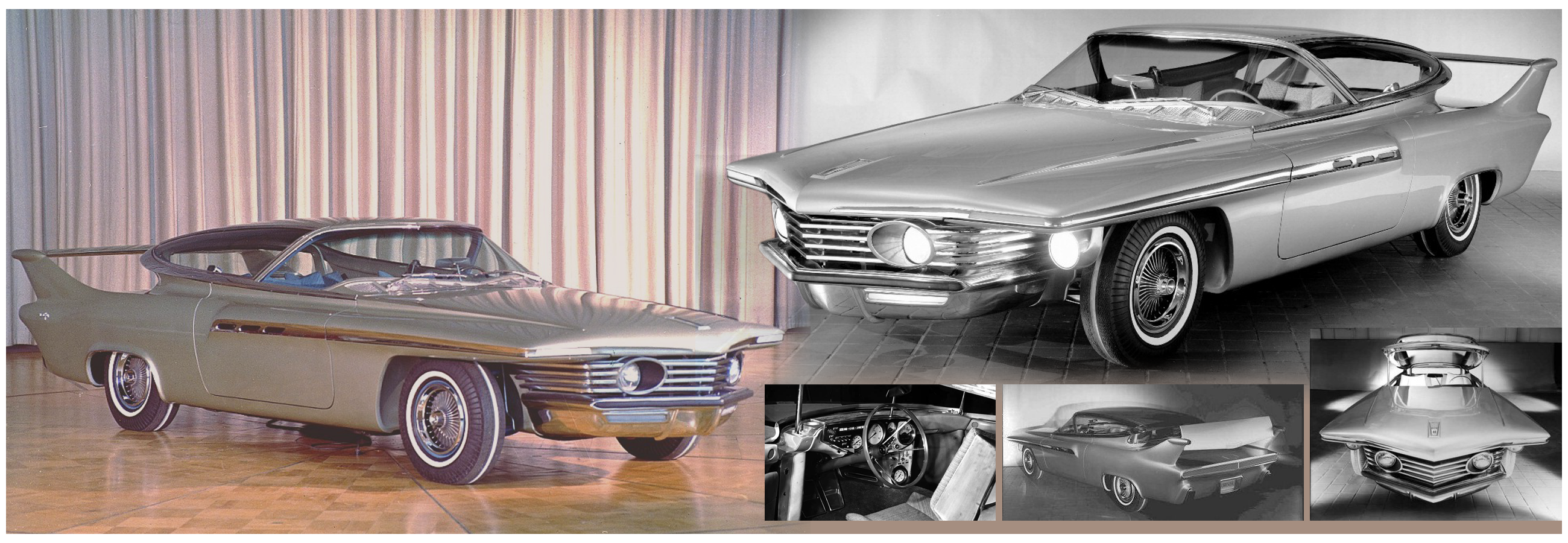 One thing you have to give them, the Idea cars of the 1950-60s were absolutely no-holds-barred insane. Those guys were fearless. In many ways, the �there are no rules� design studies of that era were probably as pure as the very first automobile designs in terms of creativity and innocence. The 1961 Turboflyte came out swinging, virtually destroying any idea you had about the what a car should look like. Even the whitewall tire morphed into some sort of tread design fashion statement. The car featured a funky front-end and even funkier retractible-ish roof piece. The car took space-age styling to a new level, even tying the huge rear fins together in some sort of crazy winged aerodynamic statement. A statement, by the way, which would find its way onto another couple of killer Mopars not even a decade later, instantly becoming iconic.
One thing you have to give them, the Idea cars of the 1950-60s were absolutely no-holds-barred insane. Those guys were fearless. In many ways, the �there are no rules� design studies of that era were probably as pure as the very first automobile designs in terms of creativity and innocence. The 1961 Turboflyte came out swinging, virtually destroying any idea you had about the what a car should look like. Even the whitewall tire morphed into some sort of tread design fashion statement. The car featured a funky front-end and even funkier retractible-ish roof piece. The car took space-age styling to a new level, even tying the huge rear fins together in some sort of crazy winged aerodynamic statement. A statement, by the way, which would find its way onto another couple of killer Mopars not even a decade later, instantly becoming iconic.
1964 Pontiac Banshee concept
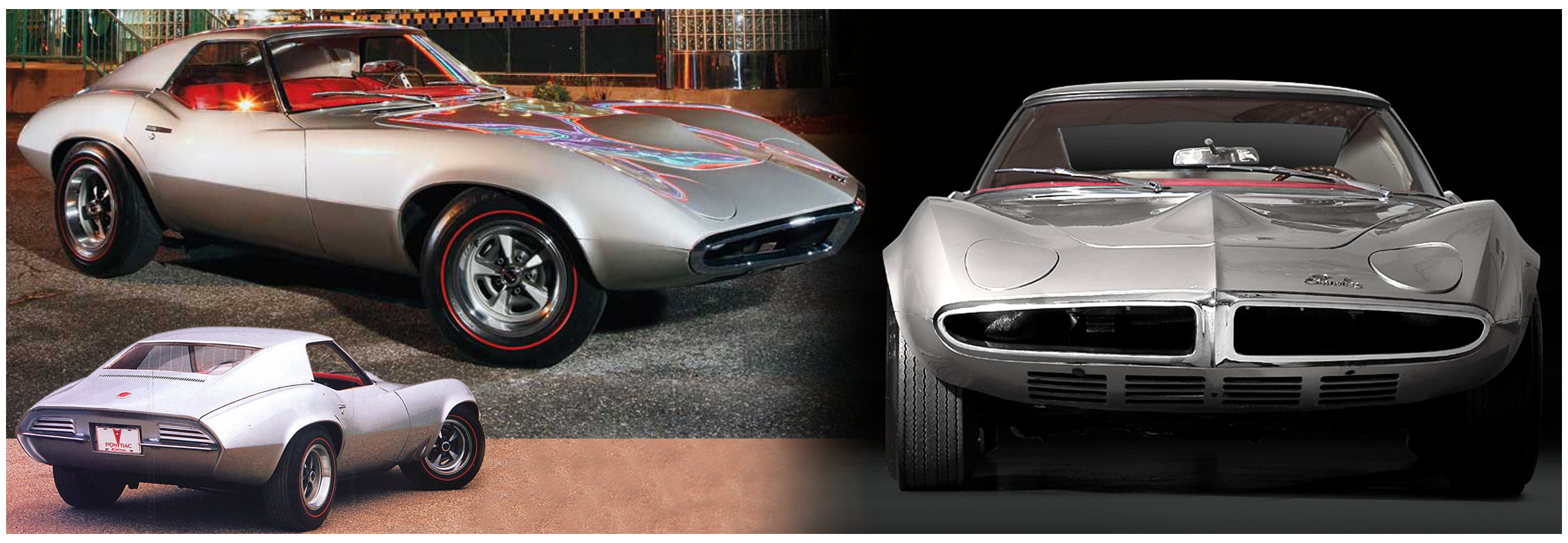 Perhaps the greatest blow to boy-racers everywhere was the demise of Pontiac. Pontiac always seemed to get us. I mean have you seen Smokey and the Bandit? You should. Pontiac made a habit of putting cars we liked into production. Just soak up the good vibes of GTO and Trans Am and exhale. For further proof of how much we miss them and what could have been, we present the 1964 Pontiac Banshee concept. The idea was so strong that the concept just kept popping up for years, no doubt a poster hanging in the locker of every single Pontiac employee. The Banshee was bad to the bone. Not necessarily in terms of sheer horsepower, though. The car lived with an inline six and V8 under the hood in its first two iterations. What it may have lacked in cubic inches early on, it more than made up for with style. This car bubbled with lines of a third generation Corvette that had yet to be born and featured tail light styling that would live for many more years on Pontiac production cars. It kind of felt like seventies Opel and Corvette hopped in a time machine, had a wild night out and the egg hatched in 1964. The Banshee did have a super weird bulge on its hood and somewhere in the neighborhood of zero storage space, but it looked so good. Imagine a world where a few model years in, Super Duty big blocks rolled off the line in these things? So much of this concept made its way into production cars, but alas the Banshee never did and now even the Pontiac brand is gone. All hope is lost.
Perhaps the greatest blow to boy-racers everywhere was the demise of Pontiac. Pontiac always seemed to get us. I mean have you seen Smokey and the Bandit? You should. Pontiac made a habit of putting cars we liked into production. Just soak up the good vibes of GTO and Trans Am and exhale. For further proof of how much we miss them and what could have been, we present the 1964 Pontiac Banshee concept. The idea was so strong that the concept just kept popping up for years, no doubt a poster hanging in the locker of every single Pontiac employee. The Banshee was bad to the bone. Not necessarily in terms of sheer horsepower, though. The car lived with an inline six and V8 under the hood in its first two iterations. What it may have lacked in cubic inches early on, it more than made up for with style. This car bubbled with lines of a third generation Corvette that had yet to be born and featured tail light styling that would live for many more years on Pontiac production cars. It kind of felt like seventies Opel and Corvette hopped in a time machine, had a wild night out and the egg hatched in 1964. The Banshee did have a super weird bulge on its hood and somewhere in the neighborhood of zero storage space, but it looked so good. Imagine a world where a few model years in, Super Duty big blocks rolled off the line in these things? So much of this concept made its way into production cars, but alas the Banshee never did and now even the Pontiac brand is gone. All hope is lost.
1966 AMC AMX II concept
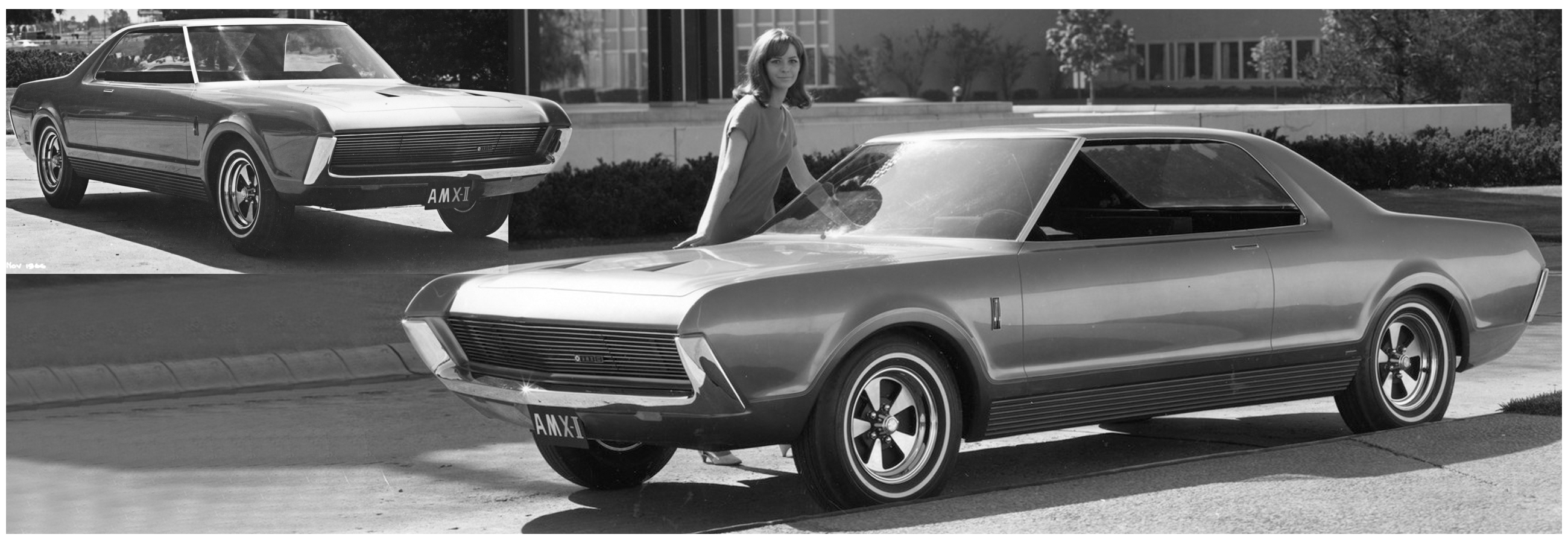 AMC will probably go down in history as the bridesmaid. They just seemed to be one step behind on everything. Their cars were almost like generic cereal names, close but not quite. It makes your heart weep to look at the AMX II concept, a killer car and would have been a gem on the highways of the late sixties. Part Mustang, part Charger and maybe even ahead of its time. The AMX II skipped the fastback treatment of its concept stable mate, opting for the traditional sports coupe formula and did a pretty good job of it. Headlights hid tastefully behind retractable panels in the grille. The car was slick, even hiding the wipers under a motorized cowl panel. You may even start to like it better than the other cars if you stare long enough. Oh, how the world might have changed if everyone else was chasing AMC, if even for a just few model years.
AMC will probably go down in history as the bridesmaid. They just seemed to be one step behind on everything. Their cars were almost like generic cereal names, close but not quite. It makes your heart weep to look at the AMX II concept, a killer car and would have been a gem on the highways of the late sixties. Part Mustang, part Charger and maybe even ahead of its time. The AMX II skipped the fastback treatment of its concept stable mate, opting for the traditional sports coupe formula and did a pretty good job of it. Headlights hid tastefully behind retractable panels in the grille. The car was slick, even hiding the wipers under a motorized cowl panel. You may even start to like it better than the other cars if you stare long enough. Oh, how the world might have changed if everyone else was chasing AMC, if even for a just few model years.
1967 Ford Mach 2 concept
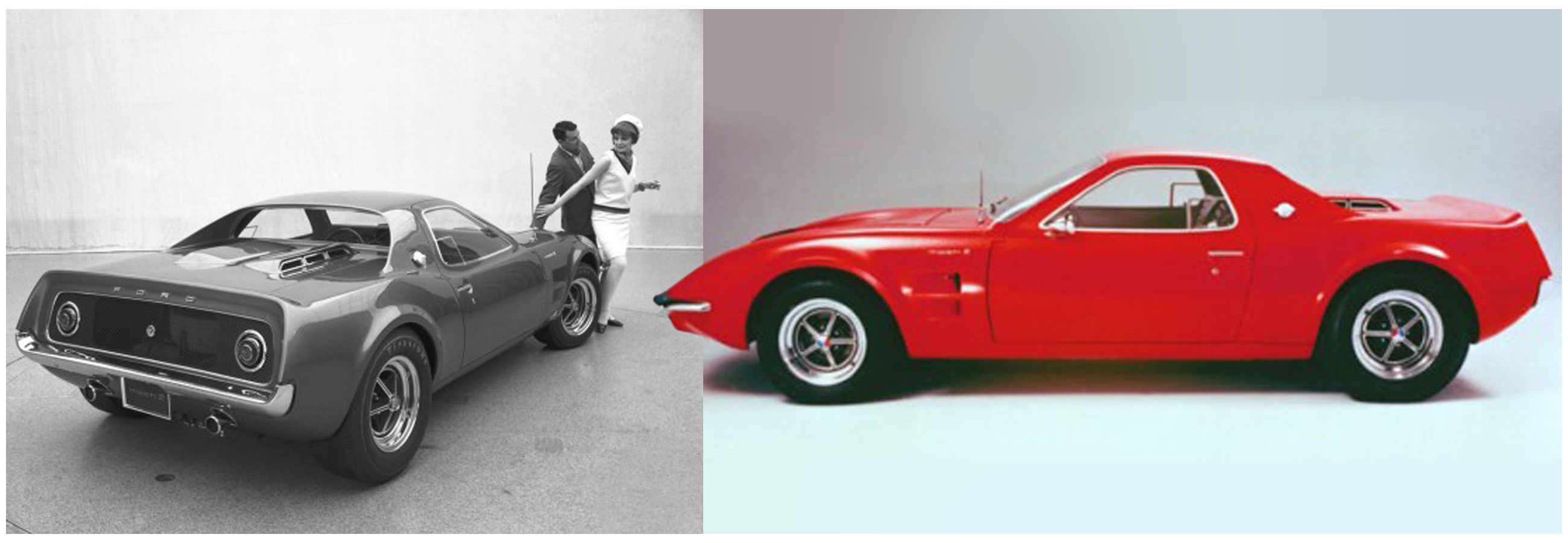 Who isn�t a fan of wicked little hot rods? The Ford Mach 2 plopped onto the scene in 1967. Ford built the car as a mid-engine 289 with a ZF transaxle, and it was properly small and quick. Allegedly, the Mach 2 was a design study to see if moving the motor to the middle was a good idea. Staring down the barrel of what would become an oil crisis, manufacturers were just beginning to seriously explore others ways to increase performance including suspension and weight distribution. Racing and sales were so closely related at the time, there was a legitimate reason to build better performing cars than the other guys. The Mach 2 never made it to serious consideration for production, but would have surely found plenty of garages to call home if it had.
Who isn�t a fan of wicked little hot rods? The Ford Mach 2 plopped onto the scene in 1967. Ford built the car as a mid-engine 289 with a ZF transaxle, and it was properly small and quick. Allegedly, the Mach 2 was a design study to see if moving the motor to the middle was a good idea. Staring down the barrel of what would become an oil crisis, manufacturers were just beginning to seriously explore others ways to increase performance including suspension and weight distribution. Racing and sales were so closely related at the time, there was a legitimate reason to build better performing cars than the other guys. The Mach 2 never made it to serious consideration for production, but would have surely found plenty of garages to call home if it had.
1968 Chevrolet Astro II XP-880 concept
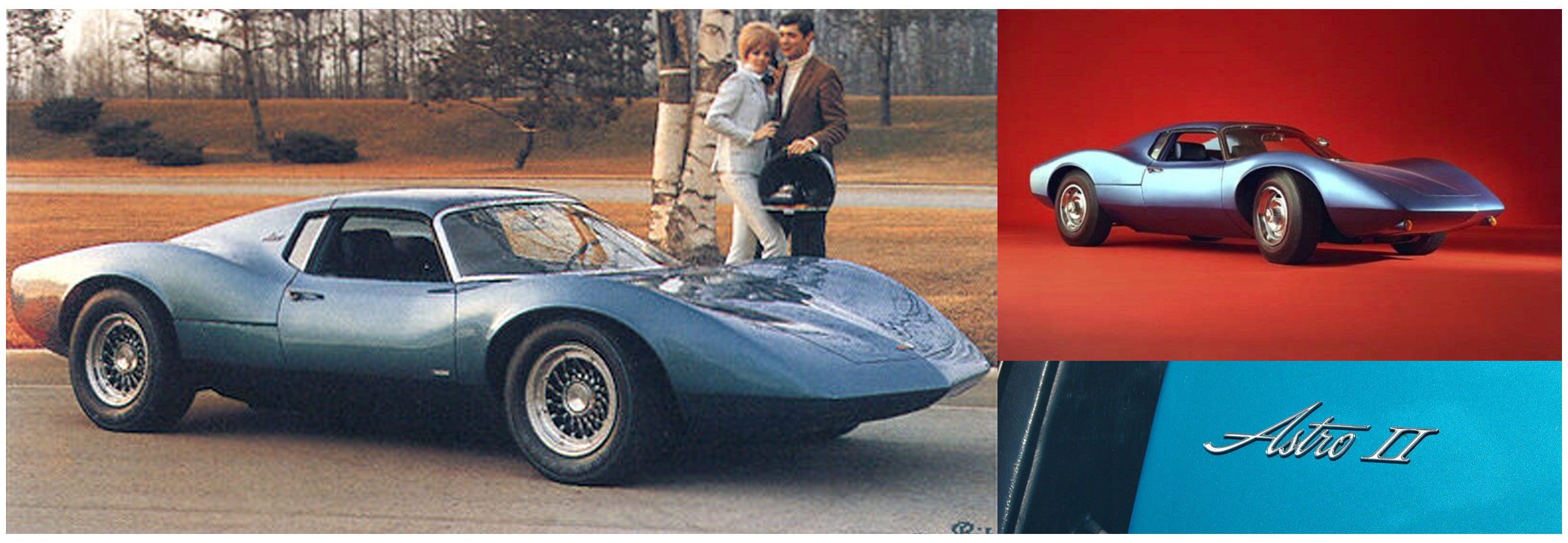 By 1968, Chevrolet had dug in its heels as a performance mogul. They were racing on Sunday and selling on Monday with the best of �em. Their dreamy and yet totally goofy Astro concept in 1967 tipped their hand, that they were doing some serious performance meditation down in the dank confines of the Skunkworks. The Astro I was slippery and even took a shot at the air-cooled Corvair-powered supercar concept. Too wild? Probably, and in 1968 the much easier to digest Astro II XP-880 showed up. The car was sexy, simple and somehow managed to look like a race car, concept car and a realistic road car all at the same time. The real turmoil must have been the missing Corvette badge. It wasn�t a Corvette and it was mid-engined, but was it even possible for Chevrolet not to badge this car as the new Corvette? Was this the next Vette? This must have given many of the Corvette faithful heart palpitations. Heading into the seventies, all eyes were on Corvette and for a few moments, the Astro made it very interesting. Today the Corvette is an icon for front-engine/rear-drive V8 American performance, that recipe has been the same since the mid-fifties. Had they moved the motor to the middle over 40 years ago, imagine where we�d be today, especially if�Ford's Mach 2 was parked across the street.
By 1968, Chevrolet had dug in its heels as a performance mogul. They were racing on Sunday and selling on Monday with the best of �em. Their dreamy and yet totally goofy Astro concept in 1967 tipped their hand, that they were doing some serious performance meditation down in the dank confines of the Skunkworks. The Astro I was slippery and even took a shot at the air-cooled Corvair-powered supercar concept. Too wild? Probably, and in 1968 the much easier to digest Astro II XP-880 showed up. The car was sexy, simple and somehow managed to look like a race car, concept car and a realistic road car all at the same time. The real turmoil must have been the missing Corvette badge. It wasn�t a Corvette and it was mid-engined, but was it even possible for Chevrolet not to badge this car as the new Corvette? Was this the next Vette? This must have given many of the Corvette faithful heart palpitations. Heading into the seventies, all eyes were on Corvette and for a few moments, the Astro made it very interesting. Today the Corvette is an icon for front-engine/rear-drive V8 American performance, that recipe has been the same since the mid-fifties. Had they moved the motor to the middle over 40 years ago, imagine where we�d be today, especially if�Ford's Mach 2 was parked across the street.
1973 Ford Explorer concept
 You�re laughing at this thing, but hang on a minute. It took us 20 or 30 more years to realize that crossover utility vehicles were cool. Maybe Ford had it right in 1973? The Explorer concept spiced up the old Ranchero/El Camino idea and added in some forward cab Econoline flair for good measure. The ridiculous sunshade/tent thingy aside, this really wasn�t a terrible idea. It had a big block, knobby tires and PLENTY of space for coolers and surf boards. The Econoline [van] pickups were blasted for being so horribly underpowered and ultimately not cool enough to get the sales figures pumping, Ford needed to adjust the recipe. Keep laughing, but the Explorer would have been a pretty cool weekend adventure wagon and it would have done a pretty decent burnout at the Dairy Queen after getting ice cream on the way home.
You�re laughing at this thing, but hang on a minute. It took us 20 or 30 more years to realize that crossover utility vehicles were cool. Maybe Ford had it right in 1973? The Explorer concept spiced up the old Ranchero/El Camino idea and added in some forward cab Econoline flair for good measure. The ridiculous sunshade/tent thingy aside, this really wasn�t a terrible idea. It had a big block, knobby tires and PLENTY of space for coolers and surf boards. The Econoline [van] pickups were blasted for being so horribly underpowered and ultimately not cool enough to get the sales figures pumping, Ford needed to adjust the recipe. Keep laughing, but the Explorer would have been a pretty cool weekend adventure wagon and it would have done a pretty decent burnout at the Dairy Queen after getting ice cream on the way home.
Coker Tire Company serves the vehicle collector and enthusiast market with whitewall tires, bias ply tires and specialty application tires and wheels. Many of the unique products that we offer are direct fitments for the classics of the 1950s and 1960s that came from these fantastic concept cars. Vintage race tires, knobby truck tires, redlines and whitewalls are all available in our online store now. Our products are not only used on many preserved concept cars in museums, but are found on roads all over the world, fitted to surviving classics, restored cars, trucks and motorcycles. [products]
